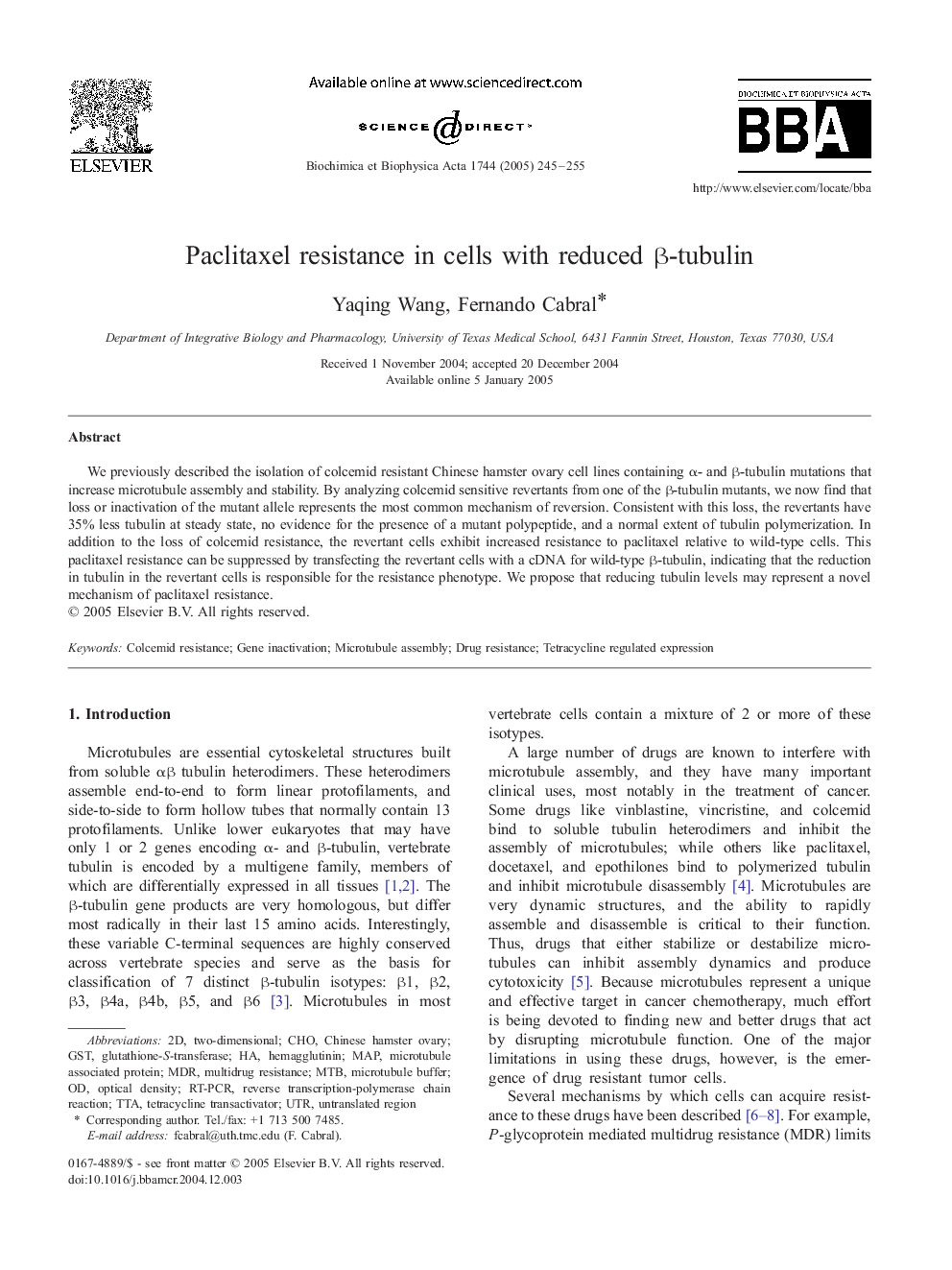| Article ID | Journal | Published Year | Pages | File Type |
|---|---|---|---|---|
| 10803201 | Biochimica et Biophysica Acta (BBA) - Molecular Cell Research | 2005 | 11 Pages |
Abstract
We previously described the isolation of colcemid resistant Chinese hamster ovary cell lines containing α- and β-tubulin mutations that increase microtubule assembly and stability. By analyzing colcemid sensitive revertants from one of the β-tubulin mutants, we now find that loss or inactivation of the mutant allele represents the most common mechanism of reversion. Consistent with this loss, the revertants have 35% less tubulin at steady state, no evidence for the presence of a mutant polypeptide, and a normal extent of tubulin polymerization. In addition to the loss of colcemid resistance, the revertant cells exhibit increased resistance to paclitaxel relative to wild-type cells. This paclitaxel resistance can be suppressed by transfecting the revertant cells with a cDNA for wild-type β-tubulin, indicating that the reduction in tubulin in the revertant cells is responsible for the resistance phenotype. We propose that reducing tubulin levels may represent a novel mechanism of paclitaxel resistance.
Keywords
MDRUTRGSTRT-PCRMTBTTAChoTetracycline transactivatorChinese Hamster Ovarytwo-dimensionalGene inactivationDrug resistanceMultidrug resistanceuntranslated regionMicrotubule assemblymaphemagglutininreverse transcription-polymerase chain reactionmicrotubule associated proteinoptical densityglutathione-S-transferase
Related Topics
Life Sciences
Biochemistry, Genetics and Molecular Biology
Biochemistry
Authors
Yaqing Wang, Fernando Cabral,
